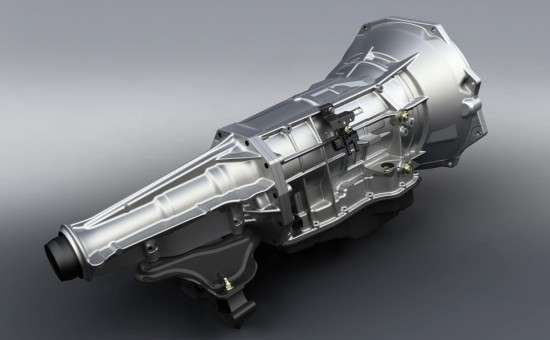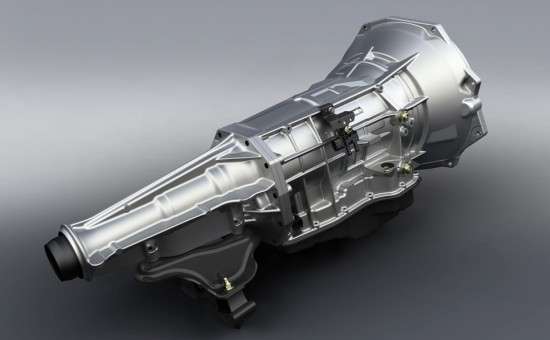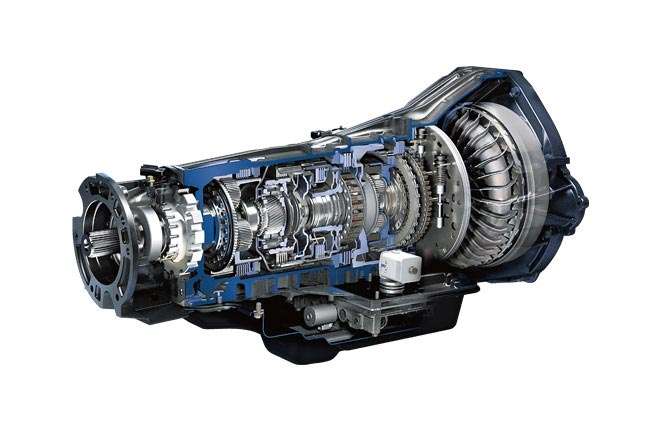Recent Articles
Popular Makes
Body Types
How Does An Automatic Transmission Work?

The transmission’s main job is to transmit the engine’s power to the differential while allowing different drive (and torque multiplication) ratios.
Unlike a manual transmission, where a friction clutch is used to transfer the power from the engine to the input of the transmission, the traditional automatic transmission uses a type of fluid coupling called the torque converter. It uses transmission fluid to transfer the power from the engine to the input shaft of the transmission by using two sets of nearly identical vanes. The one nearer the engine is called the turbine, and it is attached to the transmission input shaft. The one nearest the transmission is called the impeller, and turns at engine speed. If you are having problems visualizing this setup, try imagining the impeller as a pump forcing water down a tube, and the turbine as a generator (like in a hydro-electric power plant) on the other end.
At idle, the impeller is turning so slowly that not enough power is transmitted to turn the turbine and get the vehicle moving. As the engine speed increases, the turbine slowly starts spinning. The heavier the vehicle, the faster the engine needs to spin before the turbine will start moving. Eventually the impeller and turbine will be turning at approximately the same speed, however the turbine will never travel at the same speed as the impeller due to slippage. In fact, the turbine will usually travel around 3% to 8% slower than the impeller. When the accelerator is released the situation is reversed. The turbine tries to speed up the impeller, however the engine is slowed by its compression, resulting in smooth engine braking.
Part of what makes the torque converter a torque converter instead of a simple fluid coupling is the stator. This part sits between the impeller and the turbine and redirects the fluid back into the impeller with some force. This effectively multiplies the force of the engine up to 200% or 250%. This torque multiplication is greatest when the impeller is travelling much faster than the turbine. As the two get closer in speed torque multiplication drops, until they are travelling at around the same speed and there is no multiplication.
Whenever there is slippage between the turbine and impeller, and especially when their difference in speed is large, significant amounts of heat can be generated. The transmission is mainly cooled by the transmission fluid, and so nearly all automatic transmissions are equipped with external transmission fluid coolers.
In transmissions with overdrive the engine is often running at very low rpm, meaning that the torque convertor is spinning slowly and often slipping quite a bit, resulting in low efficiency and lots of heat. To get around this, and also help reduce some of the other efficiency losses, lockup torque converters are used. Lockup torque converters use a hydraulically actuated clutch to lock the impeller and turbine together so that they run at the same speed. This is the reason why overdrive is sometimes not recommended when driving in the city or towing, as in some cases this can cause the torque convertor to unlock and overheat the transmission fluid.

To provide different ratios the transmission uses one or more planetary gearsets. A planetary gearset contains a sun gear in the center which is surrounded by planetary gears. Everything is held in place with a carrier, and it all sits in an annular ring gear. Different gear ratios and directions can be achieved, depending on which part of the gearset (usually the ring, sun, or planetary carrier) is locked and held stationary by a band or clutch. A hydraulic piston, driven by transmission fluid is used to force the band or clutch against parts of the planetary gearset. If any two parts of the planetary gearset are locked, a 1:1 drive ratio is achieved, only locking any one of the other parts will result in over or under drive. Many transmissions use a gearset with two sets of sun gears and planet gears, with a shared carrier and ring gear, to allow for more ratios.
Automatic transmissions are usually less efficient than manual transmissions. Even with the torque converter locked, some energy is lost because some transmission fluid always needs to be pumped through the system.
